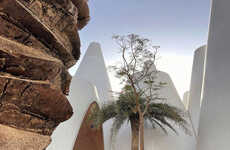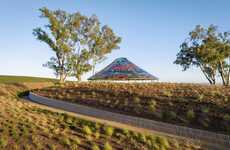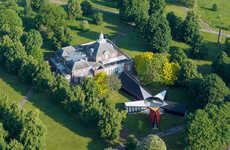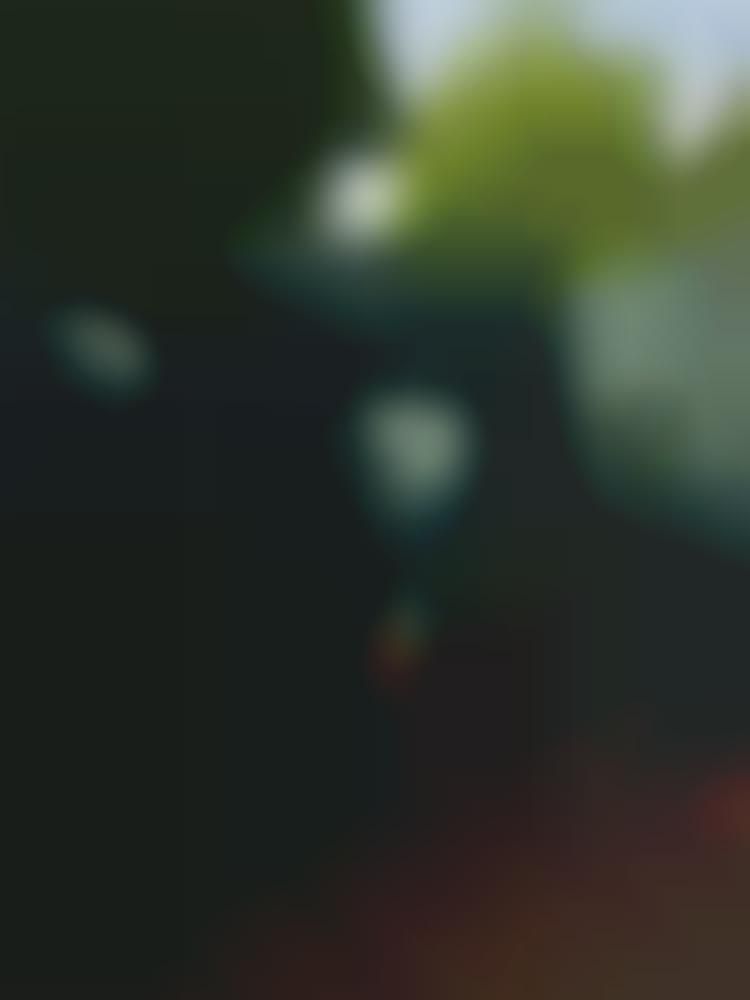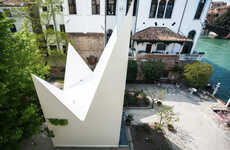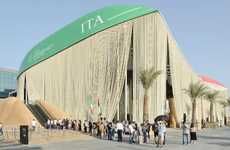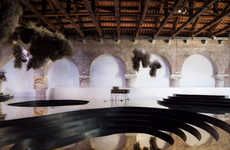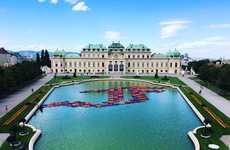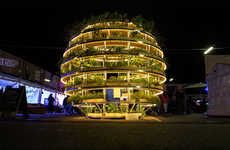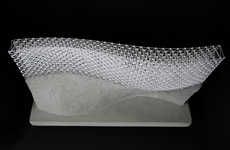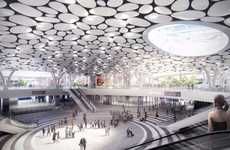
This Pavilion is Made Up of Many Circles That Form a Maze
Mishal Omar — June 6, 2016 — Art & Design
Designed for the 2016 Venice Biennale, Pezo Von Ellrichshausen's Vara circular pavilion is meant to represent a normal building that instills a sense of curiosity.
The circular pavilion is a deep green color and was made with "steel, cement, and painted plaster." The fact that the structure lacks a roof makes it look more like an art piece than a pavilion, as it lacks the intended purpose that comes along with most pavilions. The structure is made up of 10 overlapping circles and has open doorways that the viewer can walk through -- making it necessary for the viewer to find their way out of the pavilion much as they would a maze.
The circular pavilion is not intended to be functional but works as a unique art piece that was created to have an "unintelligible capacity to become something more than what it seems to be."
The circular pavilion is a deep green color and was made with "steel, cement, and painted plaster." The fact that the structure lacks a roof makes it look more like an art piece than a pavilion, as it lacks the intended purpose that comes along with most pavilions. The structure is made up of 10 overlapping circles and has open doorways that the viewer can walk through -- making it necessary for the viewer to find their way out of the pavilion much as they would a maze.
The circular pavilion is not intended to be functional but works as a unique art piece that was created to have an "unintelligible capacity to become something more than what it seems to be."
Trend Themes
1. Circular Architecture - Disruptive innovation opportunity: Develop sustainable construction materials and techniques to support the creation of circular buildings.
2. Interactive Art Installations - Disruptive innovation opportunity: Incorporate technology and interactivity into art installations to create immersive and engaging experiences for viewers.
3. Non-functional Design - Disruptive innovation opportunity: Explore the concept of non-functionality in design to challenge traditional notions and create thought-provoking and unconventional structures.
Industry Implications
1. Architecture - Disruptive innovation opportunity: Redefine the boundaries of architectural design by incorporating circular elements and non-traditional materials.
2. Art - Disruptive innovation opportunity: Merge art and technology to create interactive installations that transcend traditional boundaries of visual expression.
3. Construction - Disruptive innovation opportunity: Develop sustainable and eco-friendly construction materials that can be used in the creation of non-functional structures.
2.1
Score
Popularity
Activity
Freshness



